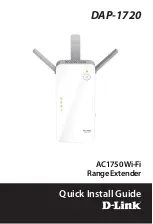
BelAir100SN User Guide
Operating in High Capacity and Interference Environments
May 31, 2010
Confidential
Document Number BDTM11001-A01 Released
•
•
, described on
•
•
, described on
•
, described on
•
Modulation Rate
Control
This feature allows the operator to directly control the allowed modulation
rates (and select the basic rates). This increases network efficiency in HCI
environments through the following effects:
• Collisions cause retransmissions that usually occur at a reduced modulation
rate. Ongoing collisions reduce the starting modulation rate for packets.
Use this feature to eliminate lower modulation rates and put a lower bound
on this effect.
• Eliminating lower modulation rates also eliminates distant clients (low RSSI)
and clients in high noise areas (low SNR).
.
VLAN based
QOS
This feature allows the operator to control the relative priority of traffic on a
per-VLAN basis.
By mapping certain VLANs onto higher priorities in HCI environments, the
traffic on those VLANs can obtain preferential access to the airwaves at the
expense of other traffic which is forced to wait.
The usefulness of this feature is limited if the overlap of the BelAir APs is
significant. It is most effective when overlap is small and the interference comes
from third-party APs.
The relevant commands are:
•
/interface/wifi-<n>-<m>/set ssid <ssid>
service-set-identifier <ssid-name> broadcast vlan <vlan-id>,
“Configuring SSIDs” on page 95
.
•
/qos/set vlan-to-queue-mapping <vlan-id> <queue-id>
, described in
detail in
















































